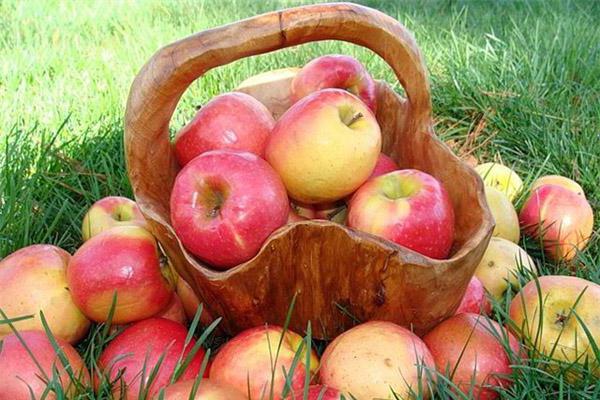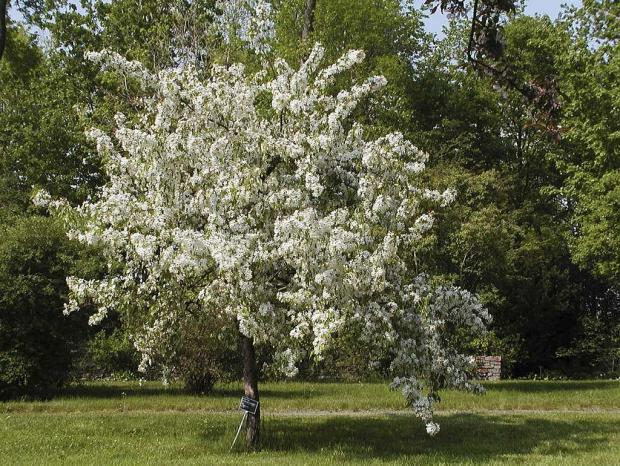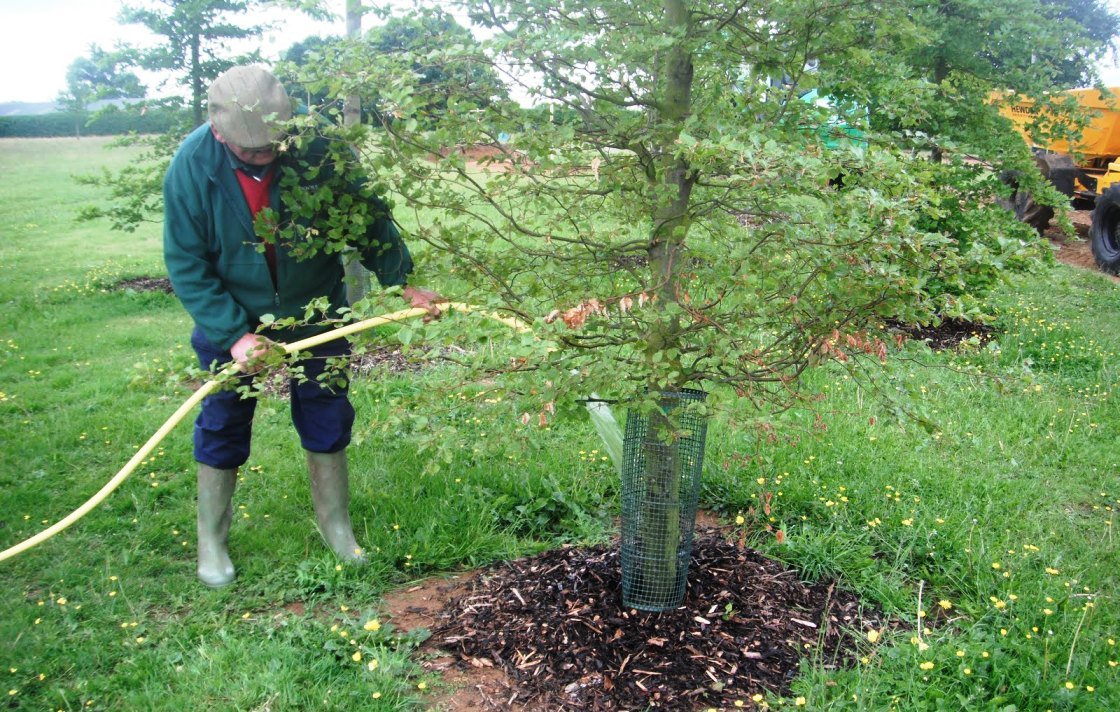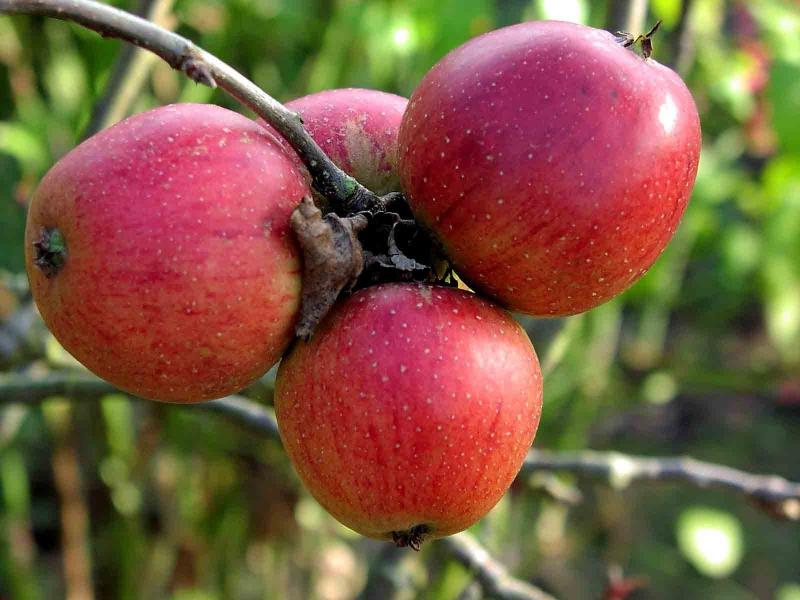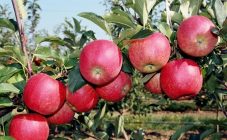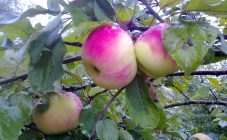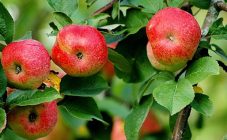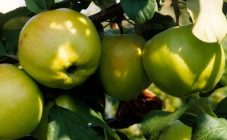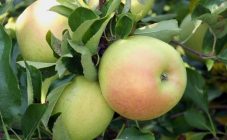Content:
One of the varieties of early autumn apples, common throughout Russia, including Siberia, is called Uslada, which got its name because of its sweet-sour taste with a light raspberry aroma. The apple variety Uslada is rather unpretentious in cultivation, however, it requires annual care in the form of crown formation, without which the yield may fall and a variety of fruits appear.
Description of the variety
Culture appeared in 1961 as a result of the work of S. I. Isaev within the walls of the Moscow State University. Lomonosov: the breeder used the basic varieties Severyanka and Narodnoye for crossing, although the Uslada genotype also contains cultivars Papirovka, Taezhnoye, Kitayka, Sibirka, Kandil Sinap, Belfleur-Kitayka, Yellow Belfleur, Borovinka.
Only in 1996, the variety was allowed for use throughout Russia, including in Western Siberia, which allows the transmitted genes of winter-hardy varieties.
To date, the Uslada apple tree (dwarf stock) does not have varieties of varieties, however, we can talk about subspecies grafted on dwarf, clonal and columnar stocks.
Specifications
Relative unpretentiousness, lack of special care and high resistance to weather conditions and pests made Uslada ideal for cultivation both in private gardening and in industrial gardens. Further, its main characteristics.
The Uslada apple tree belongs to frost-resistant crops that can be grown in central Russia. Growing it on a dwarf rootstock increases the resistance of the apple tree to frost, cold winters with thick snow covers, as well as to the harsh Siberian climate, where cultivation of the variety becomes possible thanks to delicate and professional cultivation.
Tree options
It should be noted that the tree of this variety is distinguished by a high growth rate (medium-sized): an adult apple tree grows up to 4 meters in height. The crown of Uslada consists of medium-sized skeletal branches, they grow vertically. Young trees (up to 7 years old) have a rounded crown shape, over the years it noticeably stretches and becomes oval. The parameters of the planted apple tree should be taken into account when planting it: the distance between neighboring trees should not be less than 4 meters.
Disease and pest resistance
The variety perfectly resists well-known diseases of fruit trees, including scab, which is widespread in temperate climates. With proper care, Delight is not afraid of other fungal diseases and pests.
Agrotechnics
Homemade apple tree Uslada does not require special care, with the exception of some features, and the agricultural technology of its cultivation is understandable even for a beginner in horticultural business.
Planting a tree
When choosing a place for planting a young tree, preference should be given to light black soil areas. On other soils, Uslada will also grow well and bear fruit due to its hardiness to cold, but it is unlikely to please with abundant harvests.
It should be borne in mind that this apple variety is self-fertile, therefore, to get a good harvest, the tree needs cross-pollination. The breeders call varieties like Orlik, Grushovka, Bogatyr the best pollinators for Uslada - these seedlings are recommended to be planted next to Uslada.
The pit is prepared 1-1.5 weeks before planting:
- Pit parameters: depth 0.7 m, height and width - 0.5 m and more.
- Loosen the bottom of the pit with a shovel.
- Add the mixture prepared in the following proportions: 5 kg of peat, 1 bucket of fertile soil, 15 g of potash and nitrogen fertilizers, 2 buckets of humus (rotted), 25 g of superphosphate.
- To make the seedling more stable, it is recommended to drive a peg into the hole, to which you will later need to tie a tree.
After a week and a half, you can buy a young varietal tree and plant it in a prepared hole, into which, before planting, pour a bucket of warm water. Having trampled down the ground poured into the hole a little, you need to water the seedling again, but with settled water. At the very end, you need to cover the planting site with a layer of mulch: humus, moss, small hay, peat.
Apple tree care
This apple variety needs regular basic maintenance of the tree itself. Without proper procedures, the crop can significantly lose both in volume and in taste.
So, caring for an apple tree of this variety should include:
- Watering: weekly, in abundance, so that the soil under the apple tree is sufficiently moist. A mature tree requires approximately 3 buckets of standing water.
- Loosening: removing weeds and ensuring air exchange in the soil.
- Top dressing: annually at the beginning of autumn, apply fertilizer prepared in the following proportions - 8 kg of compost compost, 5 kg of cow manure and 1 kg of poultry manure (per 1 square meter). During flowering, you additionally need to use liquid fertilizers intended for apple crops.
- Pruning: carried out once a year, in spring, before the start of sap flow. Places of incisions must be lubricated with garden varnish. When thinning the crown, it should be borne in mind that after it the sunlight should penetrate well into the apple crown. For sanitary purposes, hanging branches with a weak growth, as well as twigs frozen over the winter, are also removed.
- Stamp: it must be protected for the winter with a covering material (roofing felt, net, spruce or pine paws) or greased with mothballs or lime.
Advantages and disadvantages
Amateurs and experienced gardeners have already appreciated the clear advantages of the Uslada apple tree, the name of which speaks for itself:
- not afraid of cold weather and severe frosts;
- resistant to diseases (including scab) and pests;
- not afraid of wet soil;
- a bountiful annual harvest with proper care (the variety can also be used for commercial cultivation);
- high-vitamin fruits;
- It does not require special care.
When planning to plant this apple variety on your site, it is worth remembering only some of the features of its cultivation to obtain a uniform harvest - the annual pruning of the thickened crown and the presence of pollinating varieties in the neighborhood. By fully caring for the tree, the owner of the garden will annually receive delicious apples with a mild raspberry aroma. At the same time, they will not only delight with taste, but will be useful for the body - due to the high content of nutrients, apples are suitable even for dietary nutrition.
